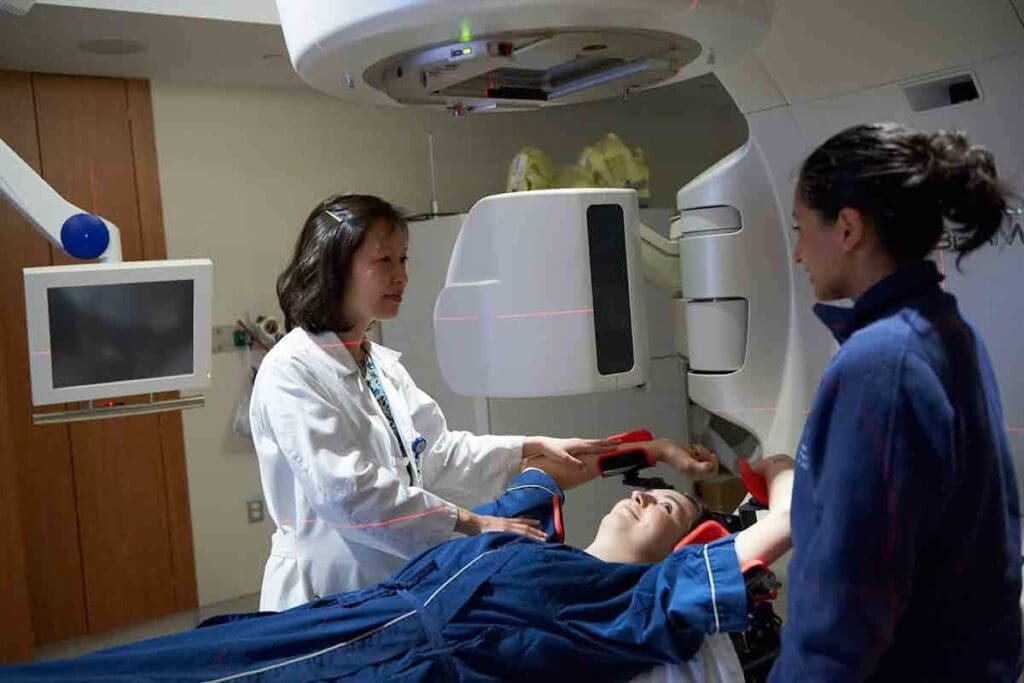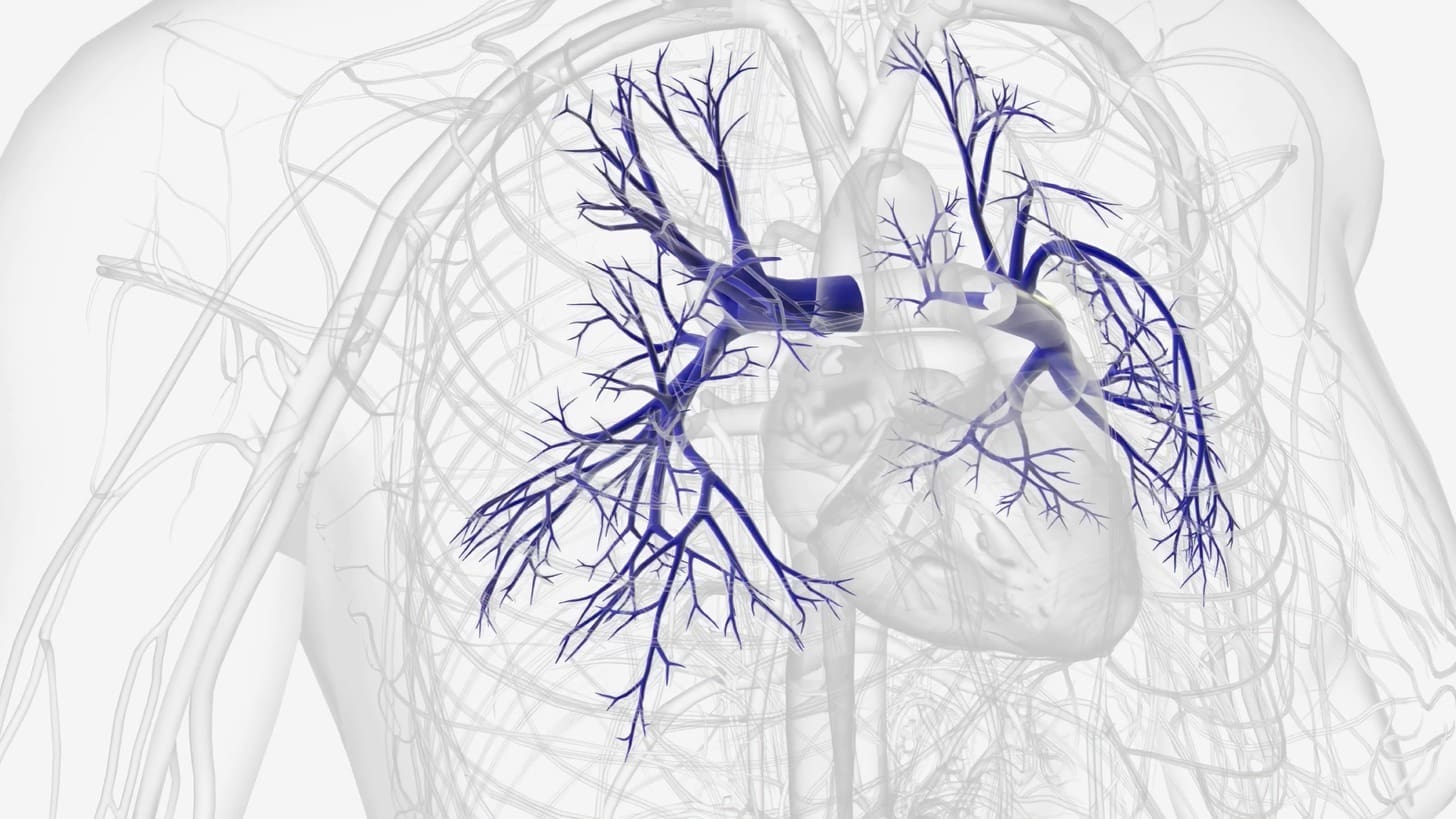Last Updated on November 27, 2025 by Bilal Hasdemir

At Liv Hospital, we know how complex cancer treatment can be. Systemic radiation therapy is a new approach. It uses radioactive drugs to kill cancer cells all over the body.
This method works well for cancers like thyroid, bone, and prostate. It uses radiopharmaceuticals to target cancer cells. This way, it protects healthy tissues.
We’re going to look into the latest in systemic radiation therapy. We’ll focus on liquid and oral pills. We’ll see how these treatments can help.
Key Takeaways
- Systemic radiation therapy uses radioactive drugs to treat cancer.
- It’s effective for thyroid, bone, and prostate cancers.
- Radiopharmaceuticals target cancer cells while sparing healthy tissue.
- Liquid and oral radiation pills offer new treatment options.
- Liv Hospital provides expert care for patients undergoing systemic radiation therapy.
The Fundamentals of Systemic Radiation Therapy

Systemic radiation therapy is a big step forward in fighting cancer. It uses special medicines called radiopharmaceuticals to find and kill cancer cells. Let’s dive into how it works and the new ways it’s being used.
How Radiopharmaceuticals Work in the Body
Radiopharmaceuticals are special medicines with a radioactive part. They are made to find and hit cancer cells right where they are. This way, they can harm the cancer without hurting the good cells around it.
The Evolution of Radiation Treatment Approaches
Systemic radiation therapy has changed how we treat cancer. Old ways of radiation therapy used beams from outside the body. This could hurt more of the body. But systemic radiation therapy is more precise. It uses medicines that can be taken by mouth or given through a vein.
| Characteristics | Traditional Radiation Therapy | Systemic Radiation Therapy |
| Method of Delivery | External beam radiation | Oral or intravenous radiopharmaceuticals |
| Targeting Precision | Less precise, affecting larger body areas | Highly targeted, minimizing damage to healthy tissues |
| Side Effects | Often more severe due to broader exposure | Generally fewer and less severe |
The use of radiopharmaceuticals in systemic radiation therapy is a big leap. It’s making cancer treatments more precise and effective. As we learn more about it, we see its huge promise in helping patients.
Fact 1: Radiopharmaceuticals – The Science Behind Radiation Pills and Liquids

Radiopharmaceuticals are changing cancer treatment with radioactive substances. They target and destroy cancer cells. This new approach is a big step forward in fighting cancer.
Composition
Radiopharmaceuticals are made of a radioactive isotope and a molecule that finds cancer cells. The radioactive part harms the DNA of cancer cells, stopping them from growing. The choice of isotope depends on the cancer type and how long it lasts.
The molecule that targets cancer cells is very specific. This helps avoid harming healthy cells. It makes the treatment more effective and safer.
How These Compounds Selectively Target Cancer Cells
The design of radiopharmaceuticals allows them to target cancer cells. Some are made to stick to proteins or receptors on cancer cells. This way, the radioactive part hits the cancer cells right where they are.
| Radiopharmaceutical | Target | Cancer Type |
| I-131 | Thyroid cells | Thyroid cancer |
| Ra-223 | Bone metastases | Prostate cancer |
| Lu-177 DOTATATE | Somatostatin receptors | Neuroendocrine tumors |
This targeted method makes treatments better and safer. It’s a big improvement over old ways of treating cancer. As scientists keep working, we’ll see even better cancer treatments.
Fact 2: Administration Methods of Systemic Radiation
Systemic radiation therapy comes in different forms, each suited for specific patients and cancers. The method chosen greatly affects treatment success.
Oral Radiation Pills for Cancer Treatment
Oral radiation pills are a simple way to get systemic radiation therapy. These pills have radioactive isotopes that the body absorbs, focusing on cancer cells. The ease of administration makes them a favorite for patients, as they can take them at home.
Liquid Radiation Therapy Techniques
Liquid radiation therapy uses radioactive liquids that are swallowed or injected. It targets specific areas, like the thyroid gland in thyroid cancer. This method is great for cancers that have spread to many places.
Intravenous Radiation Treatment Protocols
Intravenous radiation treatment puts radioactive substances directly into the bloodstream. This ensures the radioactive material reaches all parts of the body, hitting cancer cells that have spread. Intravenous administration is often used for metastatic bone cancer and other cancers that have spread.
Systemic radiation therapy has many administration methods, giving healthcare providers the flexibility to customize treatment plans. By picking the best method, they can improve treatment results and enhance the patient’s quality of life.
Fact 3: Cancer Types Most Effectively Treated with Systemic Radiation Therapy
Certain cancers do well with systemic radiation therapy, giving patients new hope. This therapy works best on cancers that are in one place or have spread. It’s a powerful tool for treating specific types of cancer.
Thyroid Cancer Management with Radiation Pills
Thyroid cancer is often treated with systemic radiation therapy. Radioactive iodine (RAI) therapy is very effective for this type of cancer. It’s given orally and targets thyroid cancer cells in the body.
RAI therapy is used for several reasons. It destroys leftover thyroid tissue after surgery. It also treats cancer that has spread to lymph nodes or other parts of the body. Plus, it helps find any remaining or recurring thyroid cancer.
Metastatic Bone Cancer Applications
Systemic radiation therapy is also great for metastatic bone cancer. Radiopharmaceuticals target cancer cells in bones, easing pain and preventing fractures. These drugs are given through an IV and focus on areas of high bone activity.
This therapy improves life quality by reducing pain and opioid use. It also lowers the chance of bone fractures.
Advanced Prostate Cancer Treatment Options
Systemic radiation therapy is a good choice for advanced prostate cancer. Lutetium-177 PSMA-617 targets prostate cancer cells by focusing on prostate-specific membrane antigen (PSMA). This method delivers radiation directly to cancer cells, protecting healthy tissues.
| Cancer Type | Treatment Approach | Benefits |
| Thyroid Cancer | Radioactive Iodine (RAI) Therapy | Destroys thyroid cancer cells, effective for differentiated thyroid cancer |
| Metastatic Bone Cancer | Radiopharmaceuticals (e.g., Samarium-153, Radium-223) | Pain relief, reduces risk of fractures, improves quality of life |
| Advanced Prostate Cancer | Lutetium-177 PSMA-617 | Targets PSMA-positive prostate cancer cells, reduces tumor burden |
These examples show how systemic radiation therapy helps with different cancers. Knowing which cancers it works best on helps us tailor care for each patient.
Fact 4: The Synergy Between Radioactive Substances and Chemotherapy Drugs
Using radioactive substances with chemotherapy drugs is a big step forward in cancer treatment. It makes treatments more effective and precise. This change is key to how we fight cancer today.
How Radioactive Chemotherapy Drugs Enhance Treatment
These drugs combine the harm of chemotherapy with the precision of radioactive substances. This mix targets cancer cells better and protects healthy tissue. Radioactive chemotherapy drugs are showing great promise in treating hard-to-reach cancers.
The drugs work by the radioactive part killing cancer cells and the chemotherapy part attacking them differently. This teamwork can lead to better treatment results and longer lives for patients.
Targeted Delivery Systems for Combined Therapies
Targeted delivery systems are key for effective treatment with radioactive and chemotherapy drugs. They make sure the drugs go straight to the cancer, reducing side effects.
One way to do this is with nanoparticles or carriers that find cancer cells. These can release their drug when they reach the tumor, making treatment even more precise.
The table below shows the benefits of mixing radioactive substances with chemotherapy drugs. It also lists some of the delivery systems used:
| Treatment Approach | Benefits | Targeted Delivery System |
| Radioactive Chemotherapy Drugs | Enhanced efficacy, targeted action, improved survival rates | Nanoparticles, antibody-drug conjugates |
| Chemotherapy Alone | Effective against rapidly dividing cells | Traditional IV administration |
| Radioactive Substances Alone | Targeted radiation, minimal damage to healthy tissue | Oral or IV administration, sometimes with targeting agents |
Fact 5: Unique Advantages of Liquid and Oral Radiation Treatments
Liquid and oral radiation treatments are changing how we fight cancer. They are known for their targeted approach and fewer side effects.
Simultaneous Treatment of Multiple Cancer Sites
These treatments can tackle cancer in many places at once. This is a big plus for those with cancer that has spread. It means we can fight cancer all over the body, not just one spot.
The American Cancer Society says it helps manage symptoms and boosts the quality of life for advanced cancer patients.
Accessing Hard-to-Reach Tumors and Metastases
They’re also great for reaching tumors that are hard to get to. Traditional methods might not work for these spots. But systemic radiation can get to cancer cells in tough places.
“Systemic radiation therapy has emerged as a critical component of comprehensive cancer care, offering a targeted approach to treating cancer that has spread or is in difficult-to-treat locations.”
Patient Convenience and Quality of Life Benefits
These treatments are also easy on patients. They’re often done outside the hospital, so patients can keep up with their lives. This makes a big difference in their quality of life.
| Benefits | Description |
| Convenience | Outpatient treatment allows patients to maintain daily routines |
| Quality of Life | Minimally invasive treatment reduces side effects and improves overall well-being. |
| Targeted Treatment | Systemic radiation targets cancer cells throughout the body |
In summary, liquid and oral radiation treatments are a big step forward in cancer care. They offer a targeted, convenient, and effective way to fight cancer.
Fact 6: Safety Considerations and Side Effect Management
When we talk about systemic radiation therapy, we must think about the risks and side effects. It’s key to manage these well to care for patients fully.
Common Side Effects of Radiation Pills and Liquid Treatments
Systemic radiation therapy can lead to side effects, from mild to severe. These include fatigue, nausea, and hair loss. How bad and long these effects last can depend on the treatment, dose, and patient.
Some patients might see changes in blood cell counts. This can raise the chance of getting infections or bleeding. Keeping an eye on these counts is vital for managing side effects well.
Radiation Safety Protocols for Patients and Caregivers
To keep others safe, patients must follow radiation safety protocols. This means staying away from family and others, like pregnant women and kids, for a while after treatment.
We tell patients to stick to these rules to protect themselves and others. This includes throwing away fluids and items that might have touched radioactive stuff.
Strategies for Minimizing and Managing Adverse Effects
It’s important to manage side effects well to keep patients’ quality of life up. We use supportive care measures like anti-nausea meds and nutrition advice.
We also teach patients to watch for and report side effects right away. This helps us catch problems early and change treatment plans if needed to help patients do better.
Fact 7: The Expanding Role of Systemic Radiation in Multidisciplinary Cancer Care
Systemic radiation therapy is becoming key in treating cancer. It’s part of a new way to fight cancer that combines different treatments. This approach aims to improve how well patients do.
Integration with Surgery and External Beam Radiation
Systemic radiation is being used with surgery and external beam radiation. This mix helps fight cancer better. It makes it harder for cancer to come back and can help patients live longer.
The benefits of this approach are clear:
- It helps control tumors better
- It can lead to longer lives
- It lowers the chance of cancer coming back
Complementary Approaches with Immunotherapy
Systemic radiation is also being tested with immunotherapy. This combo is showing great promise in fighting advanced cancers. It helps the immune system attack cancer cells more effectively.
The benefits of this combination are:
- It boosts the immune system’s fight against cancer
- It may lead to better treatment results
- It could make treatment effects last longer
Personalized Treatment Planning
Personalized treatment plans are now more important than ever. They are tailored to each patient’s needs and cancer type. Systemic radiation is planned carefully to protect healthy tissues.
As we keep improving cancer treatments, systemic radiation will play an even bigger role. By using a team approach and combining treatments, we can give our patients the best care possible.
The Patient Journey Through IV and Oral Radiation Treatment
Understanding the journey through IV and oral radiation therapy is key. It covers many stages, from the first check-up to aftercare. This path is vital for cancer treatment.
Pre-Treatment Evaluation and Preparation
The first step is a detailed check-up before treatment. Tests and assessments help pick the best plan. We work closely with patients to understand their needs and create a personalized plan.
Preparation is essential for success. Patients learn about the treatment, side effects, and the importance of following the plan. This helps set realistic hopes and lowers anxiety.
The Administration Process for Different Delivery Methods
IV and oral radiation therapy need careful handling. IV therapy uses radiopharmaceuticals given through a vein. This targets cancer cells directly. It’s done in a clinic, where patients are watched for any immediate reactions.
Oral therapy involves taking radioactive pills or liquids at home. Patients get clear instructions to safely take the medication. It’s important to follow these to protect others and ensure treatment works.
“The key to successful radiation therapy lies not just in the technology or the medication, but in the care and support provided to patients throughout their journey.”
Expert Opinion
Post-Treatment Monitoring and Follow-up Care
After treatment, patients need close monitoring. This includes regular check-ups and managing side effects. We stress the importance of follow-up care for recovery support.
Monitoring may include more tests and clinical checks. Patients learn to handle side effects and improve their quality. Our team is dedicated to full care, solving any issues that come up.
By supporting the patient journey, we can improve treatment results and life quality for cancer patients. Our aim is to offer caring, complete care tailored to each patient’s needs.
Innovations and Future Directions in Systemic Radiation Therapy
Systemic radiation therapy is on the verge of a big change. This is thanks to new radiopharmaceuticals and better targeting technology. We’re seeing big steps forward in how we treat cancer.
Next-Generation Radiopharmaceuticals in Development
New radiopharmaceuticals are being made to work better and cause less harm. They’re designed to target cancer cells more precisely, protecting healthy tissue. Scientists are working on new isotopes and ways to attach them to cancer cells to make treatments more effective.
Advances in Targeting Technology
New technologies are key to making systemic radiation therapy work better. They help radioactive substances reach cancer cells more accurately. For example, ligand-based targeting lets radiopharmaceuticals stick to cancer cells, reducing harm to healthy tissues.
Emerging Clinical Applications
Systemic radiation therapy is being used in new ways. It’s being tested for treating different cancers and diseases that spread. As we learn more about cancer, we’re finding more ways to use systemic radiation therapy in treatment plans.
| Innovation | Description | Potential Impact |
| Next-Generation Radiopharmaceuticals | More targeted, fewer side effects | Improved patient outcomes, reduced toxicity |
| Advances in Targeting Technology | Enhanced precision in delivering radioactive substances | Better treatment efficacy, minimized damage to healthy tissues |
| Emerging Clinical Applications | Expanded use in various cancers and metastatic disease | Increased treatment options for patients with diverse cancer types |
Looking ahead, systemic radiation therapy will keep being a big part of cancer treatment. With ongoing research, we’re on the path to even more breakthroughs. This brings hope to those fighting cancer and their loved ones.
Conclusion: Making Informed Decisions About Radiation Pills and Liquid Treatments
Radiation pills and liquid treatments are key options for fighting cancer. They are effective for many types of cancer. It’s important for patients and caregivers to know the good and bad sides of these treatments.
These treatments have big advantages. They can hit many cancer spots at once and reach tumors that are hard to get to. But it’s also key to know the possible side effects and how safe they are. Following safety rules is very important.
We suggest talking to your doctor about your needs and situation. This way, you can make the best choice for your care. It helps ensure you get the treatment that works best for you.
FAQ
What is systemic radiation therapy?
Systemic radiation therapy is a cancer treatment. It uses radioactive substances to kill cancer cells all over the body.
How do radiopharmaceuticals work in the body?
Radiopharmaceuticals target cancer cells. They deliver radiation right to the tumors, protecting healthy tissues nearby.
What are the different administration methods of systemic radiation therapy?
There are several ways to give systemic radiation therapy. This includes pills, liquids, and injections.
What types of cancer are most effectively treated with systemic radiation therapy?
It works well for thyroid, bone, and prostate cancers. These are cancers that spread a lot.
How do radioactive substances enhance chemotherapy?
Adding radioactive substances to chemotherapy makes treatments better. It helps target cancer cells more precisely.
What are the benefits of liquid and oral radiation treatments?
Liquid and oral treatments are convenient. They can reach tumors that are hard to get to. They also treat many cancers at once.
What are the common side effects of radiation pills and liquid treatments?
Side effects include tiredness, nausea, and low blood counts. The severity depends on the treatment and the patient.
How can side effects be managed?
To reduce side effects, follow safety protocols. Personalized care also helps manage them.
How is systemic radiation therapy integrated into multidisciplinary cancer care?
It’s used with surgery, external beam radiation, and immunotherapy. This gives a complete treatment plan for each patient.
What is the patient’s journey through IV and oral radiation treatment?
The journey starts with evaluation and preparation. Then comes the treatment, followed by monitoring and follow-up care.
What are the future directions in systemic radiation therapy?
Future advancements include new radiopharmaceuticals and better targeting technology. These will make treatments safer and more effective.
How can patients make informed decisions about radiation pills and liquid treatments?
Patients should talk to their doctors. They need to understand the benefits and risks. This helps them make the best choices for their care.
Reference:
PubMed Central. (2012). Cancer and radiation therapy: Current advances and future directions. https://pmc.ncbi.nlm.nih.gov/articles/PMC3298009






